9 Watts!!
Canyon is not the last major bike company to introduce hydraulic disc brakes to its tri bikes (there is still Trek), but this intro was eagerly anticipated. Canyon is a brand favorite in triathlon and especially among the Slowtwitch community, so this is welcome. At least to those for whom disc brakes is a value.
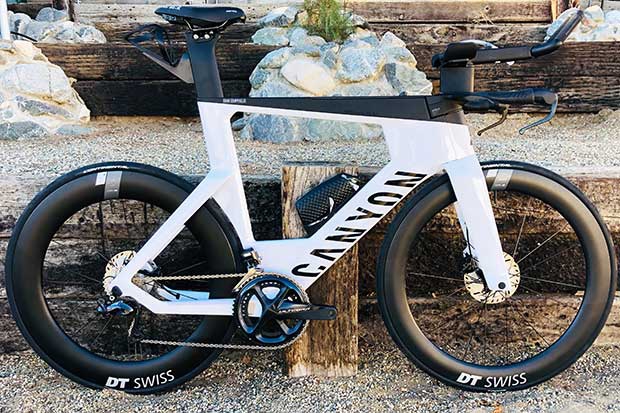
But let’s cut to the chase. I just about fell out of my chair when – during a discussion with this bike’s product managers – I heard them say that the Speedmax CFR (the top shelf) and SLX (a small step down) Disc offers a 9 watt power savings over the prior generation Speedmax CF SLX. I drilled down on that with them, because I am always skeptical of claims of achievements that appear beyond reason. This is what they said: This 9w to 10w savings was while testing at 45 kilometers per hour, which is just a tick under 28mph. While that’s a fast pace, it’s not a fictional speed. The testing they did with both frame-only, and with rider aboard, yielded congruent results.
That is a huge decrease in drag from a single system class. Savings from a wheelset, tires, chain lube, ceramic bearings, aero helmet and the like are usually more like 2 or 3 watts, assuming the tech is a real success. Replacing a pair of butyl tubes in your tires with a pair of latex tubes – if you’re not running tubeless – is worth 2 to 3 watts tops. So, 9 watts in a frame! A fair guess is that it's worth perhaps 4 minutes over an Ironman bike leg, depending on how fast you ride.
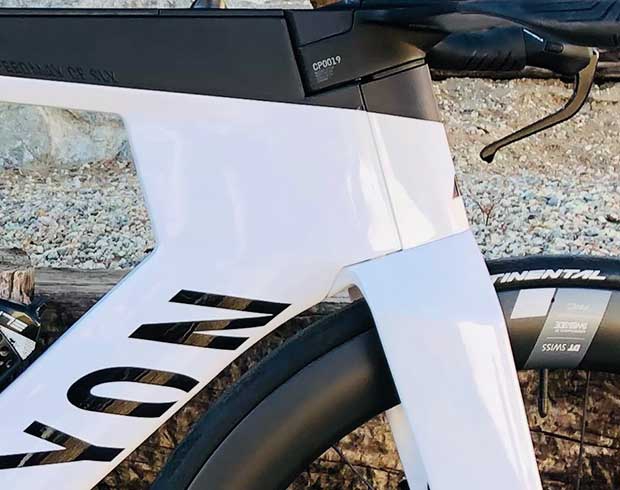
How does the new Speedmax achieve this? Canyon partnered with SwissSide, which has better capacity to run CFD analysis. CFD is a software platform that allows the designer to predict the fluid dynamics (airflow in this case; which relates to drag), so that you build a better bike. Wind tunnel testing, which proves the efficacy of your bike design, is great, but it’s often what bike makers do after they cut the mold. In this case, wind tunnel testing just proves that your gaze exceeded your grasp. How do you build a product that you’re confident will test well once it pops out of its mold? This is the point of CFD: to guide design inputs.
These are slippery tube profiles, for sure, and they’re not UCI legal. I also find it interesting when an old concept is proven out, in this case 30 years after its introduction. I wrote 11 years ago that Felt was resurrecting a particular design motif, but Canyon has taken this to a whole new level with the Speedmax series. If you look at these tube shapes, and how they interact with the wheels, it appears to me – albeit with my novice eye – that each fork blade, chain stay, and wheel is its own discreet aerodynamic construct, with its own discrete airflow. This is the antithesis of the old, legendary, Hooker Elite, which sought to make the entire bike one aerodynamic construct. The value of the approach taken by Canyon is a more rigid bike, laterally, torsionally, which will make this bike a much better handler.
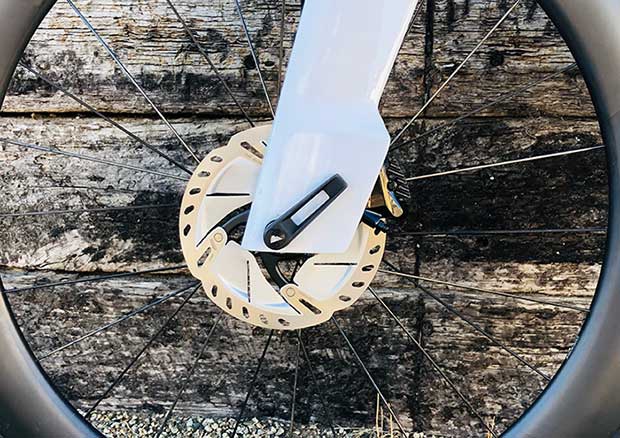
Details matter, like the way the fork blade fairs the brake caliper, without restricting the ability of the rotor to cool. Not many frames do this well: Parlee for sure, and Quintana Roo’s Shift off-side chain stay in the rear. But this Canyon design is slick.
All this is more impressive when you consider the internal storage on this bike, for food, hydration and tools. This helps the bike retain those hard won aerodynamic gains. I have one of these bikes in my hands, as of last night, and one thing I really like is the easier method for getting at the stuff you need. There’s a spring-loaded door on the top tube storage, instead of zippers and hard-to-articulate rubber openings. The hydration system is internal and, yes, Canyon has navigated around the Specialized patent on this. The bladder comes out, and Canyon has a system for sanitizing the bladder.
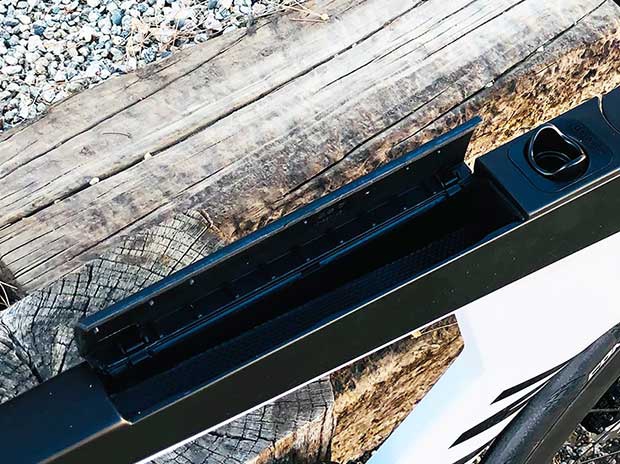
The superstructure of the bike’s front end anticipates the tube, on the end of which is the bite valve. This system is refillable on the fly. Grab a bottle from the aid station, and the system is designed to accept the bottle, pushing down on the hydration unit opens a valve, but does not close the bit cap on the water bottle. Squirt, squirt, and toss the bottle before you exit the no-litter zone.
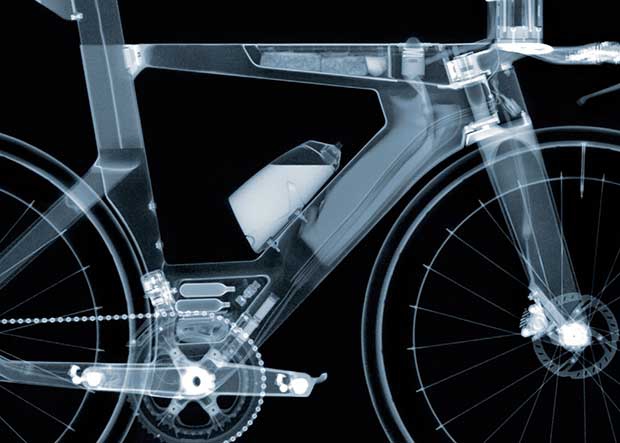
The integrated front end is Canyon-built at the CFR and SLX level. The sizing kit below may look ominous, but it’s actually simpler than traditional systems of stacking pedestals. Rather than a hardware store full of bolt sets every 5mm long from 20mm to 100mm, there are 3 pedestals under the pursuit bar and then a small number above. The number of bolts included in the system are well fewer, so, less likely to miscalculate bolt length when putting the system together.
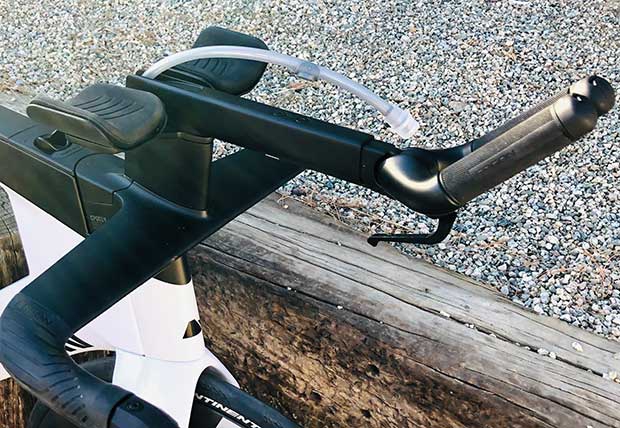
I have only just got this bike, so, I can’t tell you yet about all the adjustment options (armrest max width; and aerobar tilt). We’re working furiously on a companion piece, which will be written by Ian Murray, who hosts our Canyon Fit Assistance thread on our Reader Forum. We hope to have that up not far behind what you’re reading now.
The sizing kit that you get is below, and it comes with a manual on sizing. Ian’s upcoming piece should help you navigate this and, of course, Ian is on that forum thread to help make sure you get the right-sized Canyon the first time.
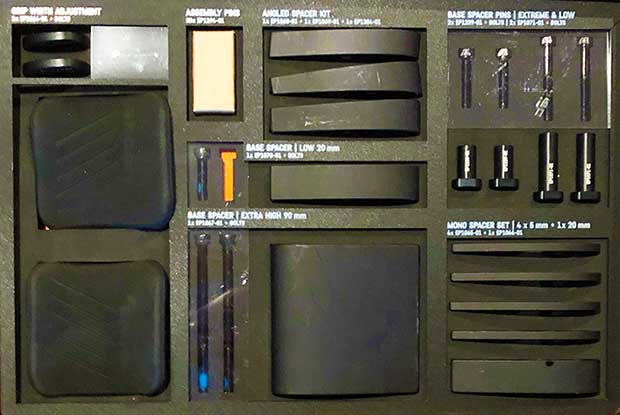
Canyon also introduced the Speedmax CF Disc, which is the more affordable model. All the Speedmax models have been upgraded, but the mid-priced bikes come with Profile Design cockpits, and lack some of the integrated features such as internal hydration. The entry level price has gone up. Only a couple of years ago the entry level for a tri bike was $2,500, but headliner companies like Cervelo and Canyon have pushed this over $3,000.
Indeed, as of now the price range for Speedmaxes, bottom to top, is $3,799 to $12,000. However, the bikes are built more as they would be once you get done with your retrofits. For example, all Speedmaxes will come with power meters, of various models (e.g., 4iii and Quarq), depending on the bike’s groupkit.
There’s much more to come! Here are the Speedmaxes as presented on Canyon’s website.



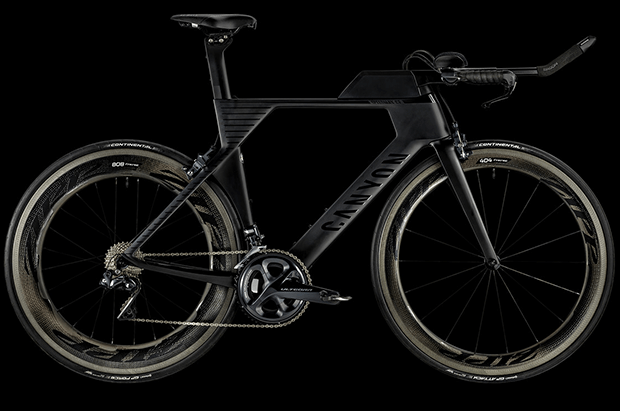
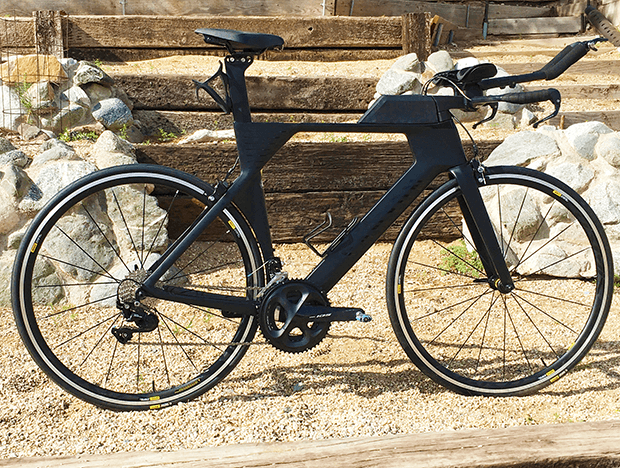
Start the discussion at slowtwitch.northend.network